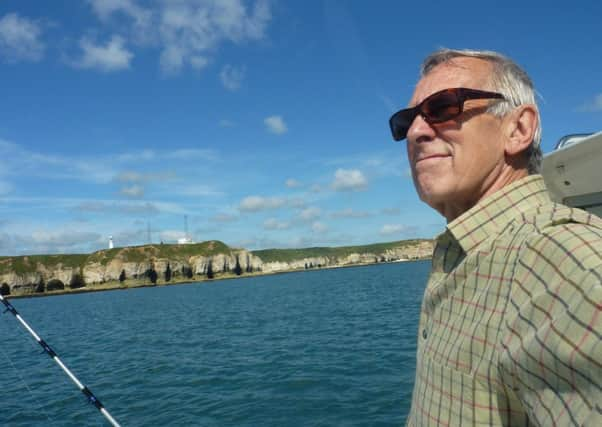Expedition stirs the primeval adrenaline


Salmon and sea trout are indigenous to our Yorkshire rivers and streams. It was the industrial revolution and the various pollutants that made them abandon us, but migratory salmon and sea trout have re-appeared in recent decades with very good showings quite recently.
John Shannon, the East Yorkshire Rivers Trust Derwent restoration projects officer, told me that there’s a barrage at the end of the River Derwent at Barmby on the Marsh where it joins the Ouse. The barrage opens daily to allow migratory fish to enter the Derwent’s 72 miles of river and streams.
Advertisement
Hide AdAdvertisement
Hide AdIt’s estimated that the fishery will add £12.5 million to the local economy. Multiply that by the Yorkshire rivers and it’s certainly worth the effort of all concerned to promote this potential.
Salmon aside and back to our well-established off shore fishery, and after a period of wind and big waves I ventured out in the boat with my trusty first mate, Kevin. It was the first nice day for a while and other boaters had the same idea.
Under beautiful sun and blue skies we slid off the trailer into the cool, beckoning sea. I reversed into Bridlington Bay. The sand bars were worse than our last trip, about 75 metres apart and with dips between them of up to two metres deep.
Talk in the boat yard speculated as to the cause. The massive digging and pipe laying operation in the bay was the obvious culprit. The salty old sea dogs thought that the tides and heavy seas had picked up the excavations and dumped them further south causing the sand bars.
Advertisement
Hide AdAdvertisement
Hide AdIt was tricky getting over the shallow water of the last bar. I had to reverse with the outboard engine tilted at 45 degrees. The propeller raced when in thin air and dug in the water as the boat rose and fell with the waves.
As I put it in forward gear to go out to sea and went over 2,000 revolutions per minute (rpm) the engine spluttered, searching for fuel. After starting and stopping during our fishing drifts the spluttering problem mysteriously disappeared and even the fish began to co-operate. I had a good bite on lugg worm and squid in 50ft of water off Bempton Cliffs. I kept snagging on the uneven bottom but then felt a pull. As I pulled up, it pulled down. It was of a size I couldn’t bully with my 10lb breakage strain hook length.
After a few dives and changes of direction it broke the surface. The dark green and red back of a cod in prime condition began to roll and toss, churning up the water. The lively fighter was netted and swung aboard. It was about 4lbs and the most colourful cod I’d caught.
We moved further south as the tide began to flood. The boat was drifting quite fast with the incoming tide, helped by a brisk northerly that came from nowhere.
Advertisement
Hide AdAdvertisement
Hide AdAs we were about to return to base Kevin thought he’d snagged the bottom and then realised it was a fish. He called for the net. His rod was bent double. The banging of his rod tip showed that this fish demanded respect.
The fishing buzz was there as he played his quarry. This is probably the same primeval feeling as all hunters have experienced down the ages. From the catching of a deer to feed the village to the modern day trawler captain seeing a full net, we get the same thrill.
Kevin was rather pleased when he saw a cod of nearly 10lbs slip into the landing net. That was the best fish of the year. It had been a difficult year so far but as we compared catches at the boat yard some of the boats had some large mackerel. These are the first mackerel to visit our shores this year and hopefully herald the big shoals to follow them.
We will target mackerel on our next trip out.